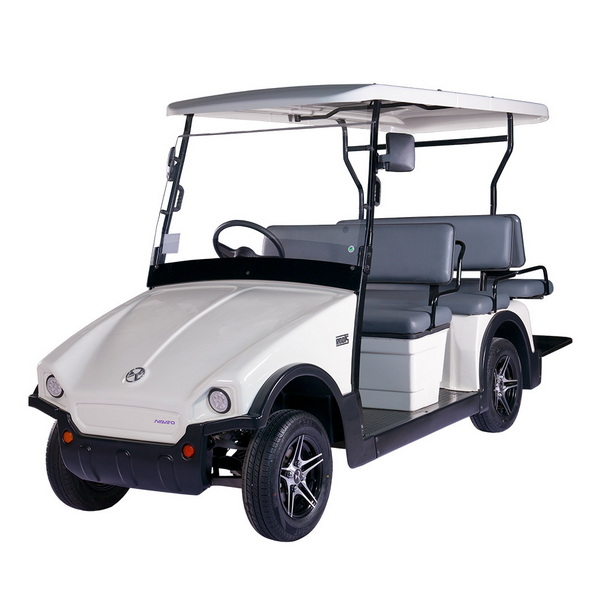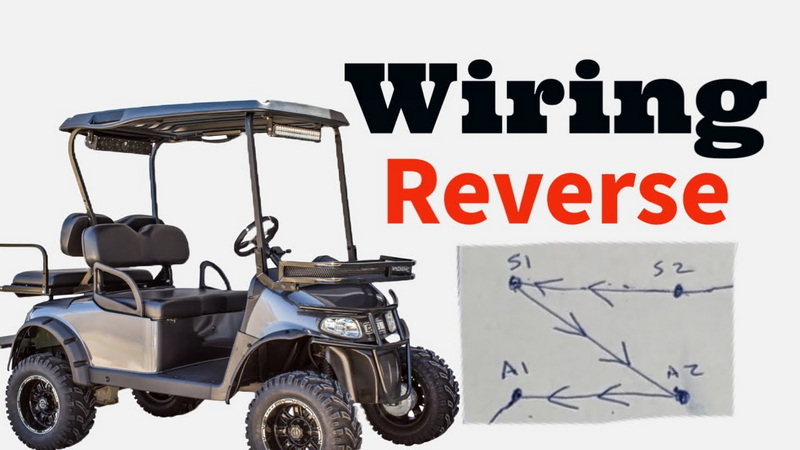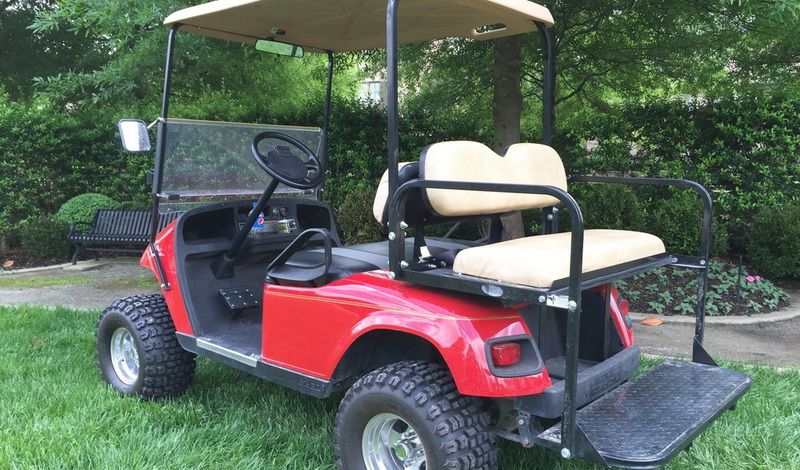Content Menu
● Understanding Electric Golf Cart Motors
>> Key Components of an Electric Golf Cart Motor:
● The Role of the Forward/Reverse Switch
>> How F/R Switch Works
● Wiring Diagrams for Reversing Direction
● Common Issues with Reverse Functionality
● Step-by-Step Guide to Reverse Your Golf Cart Motor
● Visual Aids for Wiring Configurations
● Troubleshooting Common Problems
>> Check Batteries
>> Inspect Connections
>> Listen for Solenoid Clicks
>> Examine Potentiometer Functionality
>> Resetting Your Motor
● Conclusion
● FAQ
>> 1. What type of motor do most electric golf carts use?
>> 2. How does an F/R switch work?
>> 3. What are common problems with electric golf cart motors?
>> 4. Can I fix my golf cart if it only goes forward?
>> 5. How can I test my F/R switch?
Electric golf carts are a popular mode of transportation on golf courses, in residential communities, and at various events. One key feature that enhances their usability is the ability to move both forward and backward. Understanding how an electric motor in a golf cart goes in reverse involves exploring the mechanics of the motor, the electrical components involved, and the operation of the forward/reverse (F/R) switch. This article delves into these aspects in detail, providing a comprehensive guide on reversing the direction of an electric golf cart motor.

Understanding Electric Golf Cart Motors
Electric golf carts typically utilize DC series-wound motors due to their efficiency and high torque at low speeds. These motors are favored for their ability to provide substantial power while maintaining energy efficiency, making them ideal for the varied terrain often encountered on golf courses.
Key Components of an Electric Golf Cart Motor:
- Armature: The rotating part of the motor that generates torque.
- Field Windings: Coils of wire that create a magnetic field when electricity flows through them.
- Commutator: A rotary switch that reverses the direction of current flow through the armature as it spins.
- Brushes: Conductive materials that maintain electrical contact with the rotating commutator.
Electric motors operate based on electromagnetic principles. When electric current flows through the motor's windings, it creates a magnetic field that interacts with the armature, causing it to spin. The direction of this spin can be altered by changing the direction of the current flowing through either the armature or the field windings.
The Role of the Forward/Reverse Switch
The F/R switch is crucial for enabling a golf cart to move in reverse. This switch changes the direction of current flow to the motor, effectively reversing its rotation. There are two main types of F/R switches used in golf carts:
- Mechanical Switches: These physically change connections within the circuit to reverse current flow.
- Electronic Controllers: Modern carts often use electronic speed controllers that handle reversing electronically rather than mechanically.
How F/R Switch Works
When you engage the F/R switch to reverse, several actions occur:
1. The switch reroutes power from the battery to a different set of terminals on the motor.
2. In forward mode, power flows from battery positive to one terminal (A1) and returns through another (A2).
3. In reverse mode, power is redirected to reverse terminals (S1 and S2), causing current to flow in the opposite direction.
This reversal changes the orientation of the magnetic field, making the armature rotate in reverse.

Wiring Diagrams for Reversing Direction
Understanding how to wire an electric golf cart motor correctly is essential for troubleshooting issues related to direction control. Here's a simplified overview:
- Forward Wiring Configuration:
- Battery positive connects to A1.
- Current flows through field windings and returns via A2.
- Battery positive connects to S1.
- Current flows through different field windings back through S2.
- Reverse Wiring Configuration:
- Battery positive connects to A2 instead.
- Current flows in reverse through S1 and S2, altering how electricity flows through the motor.
Common Issues with Reverse Functionality
Several problems can prevent a golf cart from going into reverse:
- Faulty F/R Switch: If this switch malfunctions, it may not properly redirect current.
- Wiring Errors: Incorrect wiring can lead to unintended motor behavior.
- Motor Damage: Internal damage within the motor can affect its ability to rotate correctly.
- Controller Failures: In carts with electronic controls, failures can prevent proper operation.
Step-by-Step Guide to Reverse Your Golf Cart Motor
To successfully reverse your golf cart motor, follow these steps:
1. Safety First: Disconnect the battery before performing any work on your golf cart's electrical system.
2. Identify Your Motor Type: Determine whether your cart uses a series-wound or separately excited (sepex) motor as wiring configurations may differ.
3. Locate Your F/R Switch: Find your forward/reverse switch and inspect it for any signs of wear or damage.
4. Check Wiring Diagrams: Refer to your specific model's wiring diagram for guidance on correct configurations.
5. Swap Connections if Necessary:
- For series-wound motors, you may need to swap wires at terminals S1 and S2 on the motor.
- Ensure all connections are secure and free from corrosion.
6. Reconnect Battery: Once all adjustments are made, reconnect your battery and test both forward and reverse functions.
7. Test Drive: Take your cart for a short drive in both directions to ensure everything is functioning correctly.
Visual Aids for Wiring Configurations
To enhance understanding, visual aids such as diagrams or videos can be extremely helpful. Below are links to resources that provide visual explanations:
These resources will give you additional insights into wiring configurations and troubleshooting methods for reversing your golf cart's electric motor.
Troubleshooting Common Problems
If your golf cart is not going into reverse or experiencing other issues, consider these troubleshooting steps:
Check Batteries
Always start by ensuring your batteries are fully charged and functioning properly. Use a voltmeter to check each battery's voltage; they should typically read around 6 volts each for a 36V system or 8 volts each for a 48V system. If any battery shows significantly lower voltage, it may need replacing or recharging.
Inspect Connections
Corroded or loose connections can prevent adequate power flow. Inspect all battery cables and connections at both ends—batteries and motor—for signs of corrosion or damage. Clean any corroded terminals with a mixture of baking soda and water followed by thorough rinsing with water.
Listen for Solenoid Clicks
The solenoid acts as a relay that allows electricity from your batteries to flow into your electric motor when engaged. When you turn on your cart and press down on the accelerator pedal, you should hear a clicking sound from the solenoid. If there's no click, inspect it further; it might need replacing if defective.
Examine Potentiometer Functionality
The potentiometer controls speed based on accelerator pedal position; if faulty, it may prevent proper operation in either direction. Check for physical damage or loose connections around this component as well as testing its output with a multimeter if necessary.
Resetting Your Motor
Sometimes simply resetting your electric motor can resolve issues where it fails to respond correctly. Locate the reset button usually found near where wires connect; press this button after disconnecting power before reassembling everything back together again.
Conclusion
Reversing the direction of an electric golf cart motor involves understanding key components such as the F/R switch and wiring configurations. By following proper procedures and utilizing available resources, you can effectively troubleshoot issues related to direction control in your golf cart. Regular maintenance and inspections will help ensure smooth operation in both forward and reverse modes.

FAQ
1. What type of motor do most electric golf carts use?
Most electric golf carts use DC series-wound motors due to their efficiency and high torque capabilities at low speeds.
2. How does an F/R switch work?
The F/R switch redirects electrical current from one set of terminals on the motor to another, reversing its direction and allowing for backward movement.
3. What are common problems with electric golf cart motors?
Common issues include faulty F/R switches, wiring errors, damaged motors, and failures in electronic controllers.
4. Can I fix my golf cart if it only goes forward?
Yes, check your F/R switch and wiring connections first; these are often responsible for directional issues.
5. How can I test my F/R switch?
You can use a multimeter to check for continuity across terminals when switching between forward and reverse positions.










































